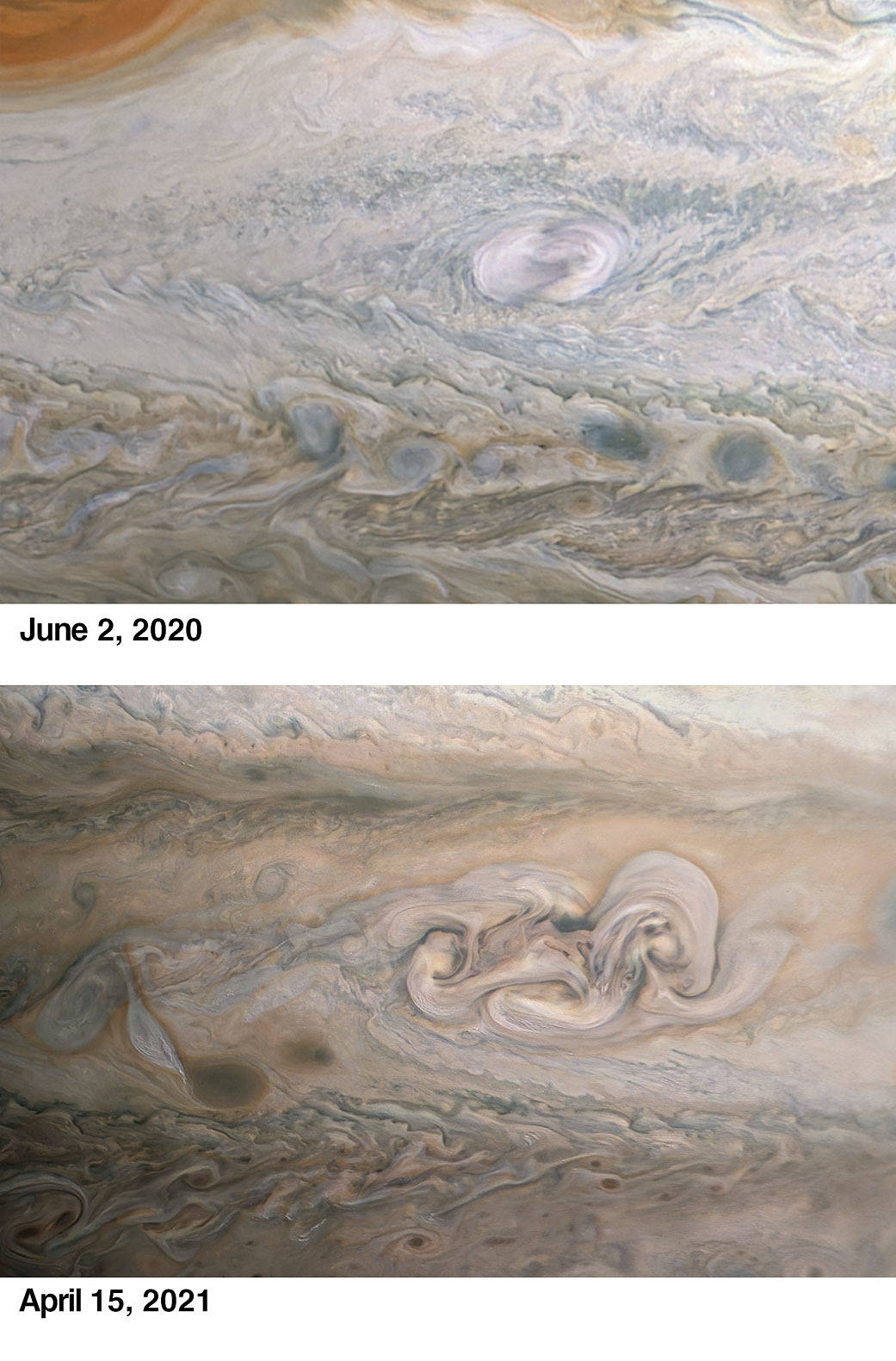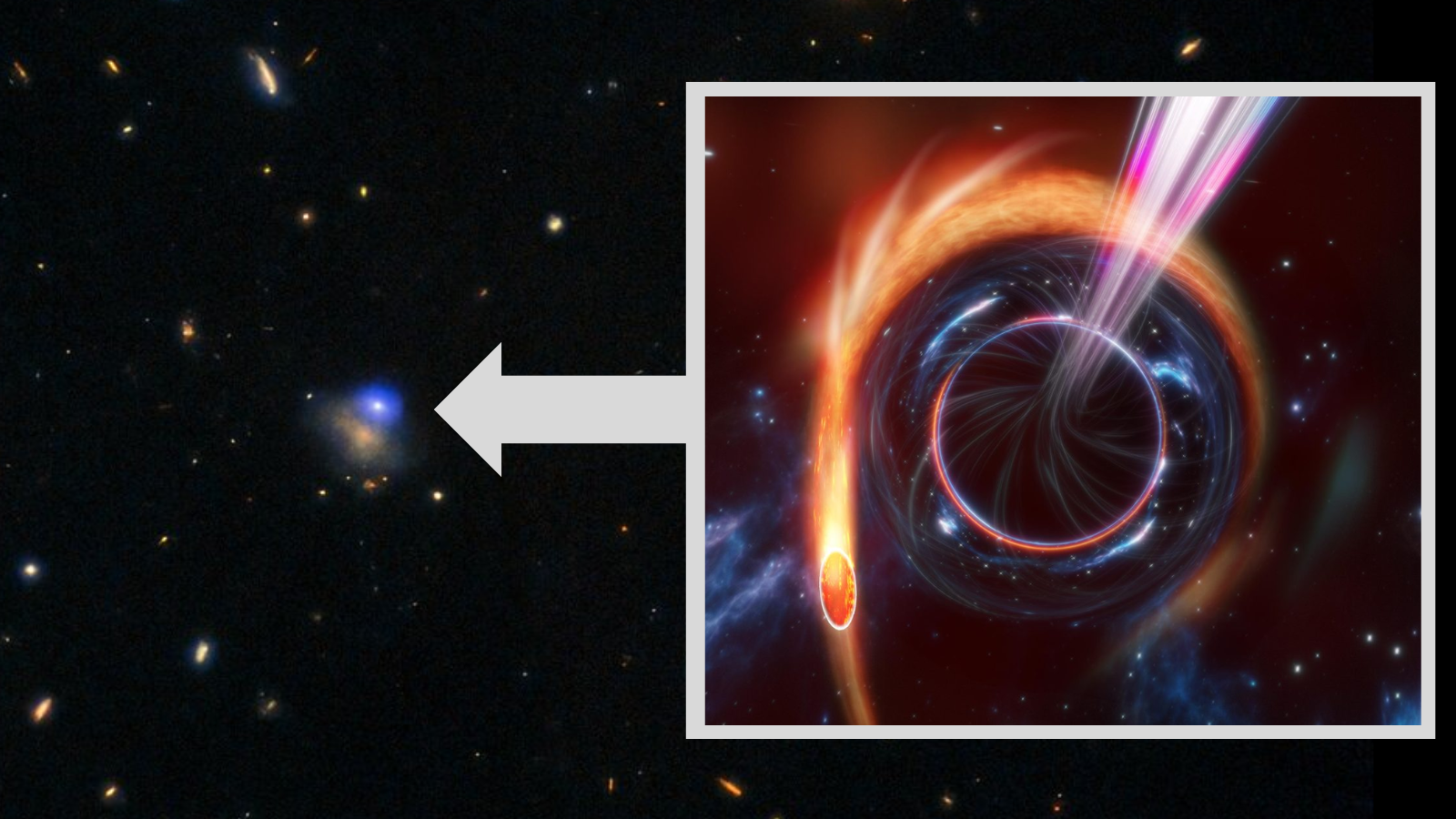'Clyde's Spot' on Jupiter has a wild new look in NASA photo
"Clyde's Spot," a feature discovered on Jupiter in 2020, has a strange new look, NASA's Juno spacecraft reveals.
The spot, discovered in 2020 by amateur astronomer Clyde Foster using his own 14-inch telescope, first appeared as an oval-shaped feature near the planet's famous "Great Red Spot." Two days after that discovery, NASA took an up-close look at the newfound feature with the Jupiter-orbiting Juno. Juno team members determined that the feature was "a plume of cloud material erupting above the top layers of the Jovian atmosphere," NASA said in a statement.
But Juno swung back around to view the spot in April 2021 and found that it looks … different.
Related: In photos: Juno's amazing views of Jupiter
In the new photo of the spot snapped by Juno, that difference is immediately apparent. In the image taken on June 2, 2020, there is a clear oval-shaped feature. But in the photo taken on April 15, 2021 during the craft's 33rd close pass over Jupiter's clouds, that oval looks more like a swirling, chaotic blob. The 2020 image was taken from about 28,000 miles (45,000 kilometers) from the top of Jupiter's clouds while the 2021 image was captured from about 16,800 miles (27,000 km) up, NASA officials said.
In the new image, the spot had drifted farther away from the Great Red Spot NASA said the statement.
Now, features like this occasionally pop up in this region of Jupiter's dynamic atmosphere, then quickly dissipate. But the observations from Juno's JunoCam instrument show that "Clyde's Spot" is still here after almost a year. This impressive staying power pegs the recently discovered spot as relatively unique compared to other atmospheric features on Jupiter, NASA officials said. (The Great Red Spot is also long-lived, of course; astronomers have been observing it for several centuries.)
Breaking space news, the latest updates on rocket launches, skywatching events and more!
Email Chelsea Gohd at cgohd@space.com or follow her on Twitter @chelsea_gohd. Follow us on Twitter @Spacedotcom and on Facebook.

Chelsea “Foxanne” Gohd joined Space.com in 2018 and is now a Senior Writer, writing about everything from climate change to planetary science and human spaceflight in both articles and on-camera in videos. With a degree in Public Health and biological sciences, Chelsea has written and worked for institutions including the American Museum of Natural History, Scientific American, Discover Magazine Blog, Astronomy Magazine and Live Science. When not writing, editing or filming something space-y, Chelsea "Foxanne" Gohd is writing music and performing as Foxanne, even launching a song to space in 2021 with Inspiration4. You can follow her on Twitter @chelsea_gohd and @foxannemusic.


